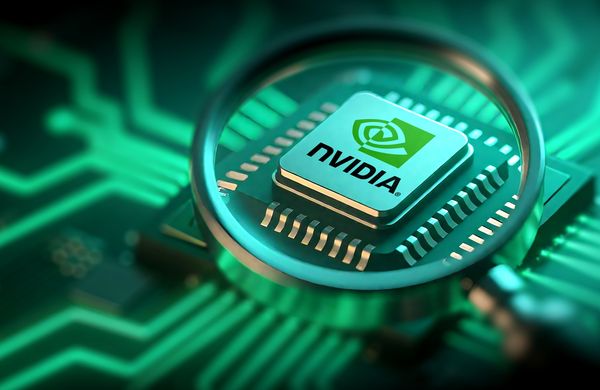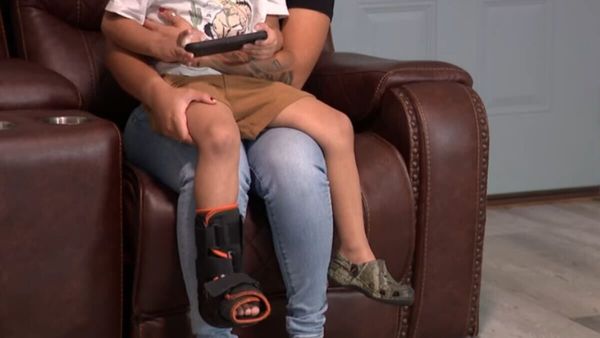The handfeeding of wild dolphins is a lucrative ecotourism industry in parts of Australia, but the impact of the practice has researchers divided.
"In most cases feeding by humans has been shown to have adverse effects, sometimes severe, on the whales and dolphins concerned," the federal Environment Department said in 2017.
Given that finding, why are the experts still split on the issue and what does the science say?
What's happening at the moment?
Handfeeding wild dolphins has been illegal in Australia since 1998, but there are four locations where tourism operators have special permits that allow feeding programs. This is called "provisioning" and it happens in:
- Monkey Mia, WA
- Bunbury, WA
- Tin Can Bay, QLD
- Moreton Island (Tangalooma), QLD
While it's regulated nationally now, the practice hasn't always been so tightly restricted. In fact, in many cases, it started with locals sharing scraps from their boats, or feeding curious dolphins that came close to shore.
But controls were tightened in 1998 when the Commonwealth government put in place the national ban, with exemptions for the tourism spots above.
With Monkey Mia's dolphins reportedly worth millions of dollars each to the economy, it and other handfeeding programs are a significant financial contributor in the regions.
But some in the industry argue the handfeeding programs' true value isn't in the income they generate.
"There's research to indicate that if people come to an animal interaction and also receive an education program, they do go home and make changes," senior Tangalooma ranger Trevor Hassard told ABC TV's Dolphins: Is Our Love Too Deep? documentary.
But Professor Lisa Ruhanen, an ecotourism and sustainable tourism researcher at the University of Queensland, said that while people might respond favourably in the short term, there was evidence that there was no long-term behavioural change from visitors.
She says the current handfeeding rules and exempt programs are an "oxymoron".
"We're making these exemptions for something that has been proven to not be in the best interests of the animal, and I would suggest that it's probably more about the best economic interests ... attracting visitors to those areas and letting them have a unique experience," she said.
As you might've picked up, these programs can be pretty divisive. Let's unpack the key for-and-against arguments.
It's worth noting here that the most substantial research on the impact of handfeeding dolphins has been completed in WA, and mostly at the Monkey Mia site.
Should programs include pre-weaned calves?
Pre-weaned calves aren't handfed in Bunbury or Tin Can Bay, while some at Tangalooma are.
Tangalooma Resort says it is allowed to feed dolphins aged two and older but they "only feed them once they demonstrate their ability to hunt and catch fish on their own".
In Monkey Mia, the WA Department of Biodiversity recently expanded the program to include pre-weaned calves.
The University of WA's Dr Simon Allen, who is part of one research group that has studied the dolphins at Monkey Mia for decades, is in favour of the move.
He said it wasn't an attempt to make the animals dependent on handfeeding, but instead, to make sure the program was sustainable and could continue to recruit new dolphins.
"It's more a matter of introducing the possibility that the female offspring could learn to take a fish and to introduce that to their daily routine," he said.
Dr Allen's research group has encouraged the WA Biodiversity Department to now consider handfeeding a foraging specialisation.
"We think it's something they should learn to do before they're weaned," Dr Richard Connor from Dartmouth University, who works alongside Dr Allen, said.
But Georgetown University's Dr Janet Mann, who's been studying the Monkey Mia dolphins since the 1980s, disagrees and says there's "virtually nothing" about eating dead fish that calves need to learn.
"They need to learn how to hunt and hunting is difficult," she said.
Both Dr Mann's and Dr Allen's research groups provide advice to the WA government about how the Monkey Mia program should be managed.
Are handfed dolphins 'terrible mothers'?
Another of Dr Mann's concerns about including calves, particularly females, is the impact it can have when they eventually become mothers themselves.
She said one dolphin at Monkey Mia, Nicky, was an example of the long-term dangers of provisioning.
She believes Nicky, who was fed as a calf, became dependent on humans for fish as an adult, which then led to her doing a bad job at feeding and nursing her own baby.
"Her calves, in response, were actually really passive and instead of going off to hunt on their own or form relationships, they would often just hang around her waiting for the opportunity to nurse or to get contact with her," Dr Mann said.
But those who run the programs say they don't provide enough fish to have a significant impact.
"You look at the percentage of the dolphins’ food requirements over a year and we're at like 0.35 per cent," David Kerr OAM, CEO of the Dolphin Discovery Centre in Bunbury, said.
"Any suggestion that that's [having] a major negative impact on the dolphin population, to me, it's like another universe."
The operators of the Monkey Mia program say handfeeding accounts for five to 10 per cent of a dolphin's daily food needs, while Tangalooma says they are given between 10 and 20 per cent.
Are handfed dolphins dying younger?
In recent years, the Monkey Mia program has lost some of its adult females, and their calves – some died while others disappeared.
A department spokesman said there was "no indication" that provisioning had influenced that outcome.
"Even following those deaths, the survival rate of provisioned dolphins is comparable with that of wild dolphins," Luke Skinner from the department said.
But Dr Mann said her research pointed to a potential knock-on effect from handfeeding that she believed was contributing to the deaths.
Meanwhile, in Bunbury, Murdoch University researcher Dr Valeria Senigaglia looked at 25 years of data to compare the lifespans and reproductive rates of provisioned dolphins compared to non-provisioned in the area.
"What I found through this study was the calf from a provisioned mother does not survive the weaning age as much as their non-provisioned counterpart," she said.
"I also discovered that provisioned dolphins have lower reproductive success than their non-provisioned mothers."
But Mr Kerr says that finding is more likely connected to broader environmental issues like warming ocean temperatures.
The Tangalooma program says it has been successful in maintaining a zero-calf mortality rate.
Are dolphins staying too close to home?
According to Dr Mann and her team, handfeeding can also make dolphins less resilient because it narrows their "home range", that is, the area they mostly travel in.
Her research found provisioned dolphins had ranges less than half the size of a typical dolphin.
"One of the costs of provisioning is you get a small home range and then you don't have another supermarket to go to, just … the one supermarket where everything's off the shelves," she said.
"The offspring of the provisioned dolphins also inherit this small range, and they have smaller ranges, even if they're not fed."
Dr Mann said this presented a dire scenario for some dolphins, when food such as sea grass in their home range dies, due to environmental shocks like warming events.
However, Dr Allen said there's other research that shows a "huge variation" in the home ranges for dolphins – whether provisioned or non-provisioned.
"If you learned from your mum or from your peers that you can accept a handout, at a spot that gives you five or 10 per cent of your daily needs, then you show up there and you get that five or 10 per cent," he said.
"Having a small home range is not necessarily a bad thing if you find enough resources within that home range."
Is it harder to make dolphin friends?
Also dividing the experts was the question of whether sticking closer to home limited a dolphin's social circle.
Dr Senigaglia found that handfed dolphins tended to roam in smaller groups, and their calves spent little time socialising with other baby dolphins.
"[It] is very significant because they need to start interacting with other individuals to start forming those social bonds that are essential for them to be successful later on," she said.
Dr Mann found similar, arguing there's a profound difference in the social and ecological experiences of dolphins living within a smaller range.
But Mr Kerr at the Bunbury Dolphin Discovery Centre said there didn't appear to be "any evidence that that's the case", and the Tangalooma program said its research and protocols ensured "all dolphin behaviours remain intact and entirely unaffected by the feeding".
What's the future of these programs?
The operators of all four current programs want to see them continue and neither the WA or Queensland governments have plans to change the rules.
But on the other side of the debate, Dr Senigaglia wants to see the programs gradually phased out, while Dr Mann said the dolphins' welfare should come first, and programs need to be carefully managed to ensure that.
The Queensland environment department didn't respond directly to questions about whether it had any concerns the feeding programs were changing dolphins' behaviour or life spans.
Instead, it said the programs were regulated, overseen and regularly audited by the department to make sure both continued to follow the rules, including how much fish are fed to the dolphins to make sure they continue to hunt in the wild.
The WA government also didn't respond directly questions about whether it was concerned about the impact of the programs but said dolphin welfare was always its highest priority.
Watch Dolphins: Is Our Love Too Deep? tonight at 8:30pm, or on ABC iview.







